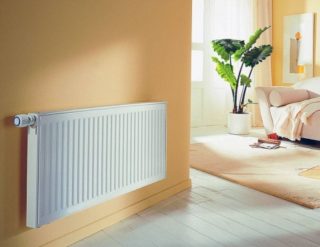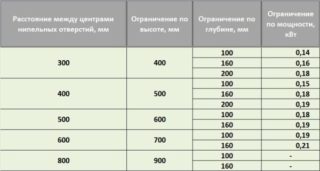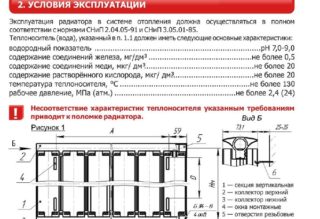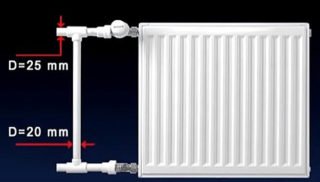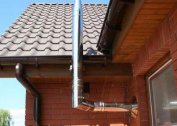Modern Termal radiators are universal heating appliances suitable for apartment buildings, industrial facilities, private buildings. They can be used in centralized and autonomous heating systems. On sale are devices of several types, the choice of which should pay attention to their technical characteristics and features.
The device and principle of operation of Termal radiators
Thermal heating radiators are produced at the Russian ZlatMash plant, which is located in the Chelyabinsk region. This company is widely known as a manufacturer of high-quality heating appliances and accessories. It offers two types of batteries: aluminum, made by pressing from a high quality alloy, and steel with optimal technical characteristics.
Each device is a single non-separable system, which is already ready for installation. Inside such a radiator is a heat-resistant core with a built-in heating element with an increased level of thermal power. The principle of operation of batteries from Termal is to generate electrical energy, which is converted into heat.
Specifications
The brand’s heating batteries are made of corrosion-resistant aluminum alloy AD 31 using extrusion technology. Separately, vertical columns and horizontal collectors are made for them; special latches are made in the columns, which engage with grooves inside the collectors. Due to this technology of Termal production, radiators are characterized by a high level of strength.
For tightness, each battery is complemented by double sealed rubber rings. Around all vertical channels, two grooves are formed where heat-resistant rubber rings are laid. After assembly, the radiators are formed into one unit, all of them are non-separable and are delivered ready-made from the factory. For installation, it is enough to hang the battery on special brackets or hooks.
Each radiator is painted according to the method of powder spraying, which makes it possible to achieve paint resistance to various damages. A pigment to prevent rust formation is added to the base paint.
Advantages and disadvantages
The appliances of the brand are often installed in Russian heating systems; they are in great demand due to their excellent performance characteristics. The list of their main advantages include:
- compact size and optimal thickness, the ability to install on open walls and under too narrow window sills;
- a guarantee from the manufacturer for a period of up to five years;
- compatibility with metal and plastic elements and communications;
- ease of installation;
- resistance to corrosion;
- aesthetic appearance;
- smooth channels, an optimal level of thermodynamics and good adaptation to Russian communications.
Among the shortcomings, the peculiarities of aluminum batteries are noted - inside them, air is formed from time to time, which must be vented. Experts also note the weakness of threaded joints, their tightness may be broken due to water hammer.
Types of Termal Radiators
The manufacturer produces radiators of two standard sizes, which have a center distance of 300 and 500 mm with a total height of 331 and 531 mm, respectively. Given the distance, devices are marked as RAP 500 and RAP 300.
With a center distance of 500 mm
The service life of devices of this type reaches twenty years. The power of one section of such a radiator is 0.161 kW, the volume of the section is 0.12 liters, the depth of the device is 52 mm, the length is 80 mm, the total mass of the section is 0.97 kg. RAP 500 devices are considered the most powerful and meet high international standards.
With a center distance of 300 mm
In RAP 300 batteries, the minimum number of sections is three, the maximum is sixteen. They withstand pressure up to 24 atm and the temperature of the thermal carrier up to +105 degrees. The length of one section of such a radiator is 80 mm, the power is 0, 114 kW, the section capacity is 0.08 liters, the depth is 52 mm, the weight is 0.7 kg. Due to the optimal characteristics, RAP 300 is installed in apartment building systems with horizontal and vertical wiring.
Production Features
When comparing the Thermal 500 and 300 radiators with foreign analogues, experts single out several main advantages of Russian devices. The shade of Thermal devices is perfectly white and glossy due to the addition of a pigment of increased whiteness to the powder coating, it is also resistant to mechanical damage. Radiators are characterized by increased strength due to the thoughtful design and use of the most advanced alloys, as well as resistance to water hammer up to 12 MPa.
Instrument sections are made of hardened extruded profiles made using a press with a pressure of up to 2000 tons. Thanks to them, the external and internal surfaces of the radiators have a uniform structure. All batteries of the brand have a service life of up to 20 years, confirmed by testing in accordance with ABOK standards. The wall thickness of the device is 52 mm, due to the reduction in the total mass of the radiators do not cause installation problems. Each battery is checked with a pressure of 36 atmospheres, after which a confirmation mark is put on it.
Termal devices can operate in environmental conditions with a pH of up to 10, in centralized systems it varies from 8.3 to 9. Most imported analogues have a threshold value with a mark of no more than 8.
Application area
Experts recommend installing the brand’s appliances in apartments of multi-storey buildings, since radiators meet all the necessary requirements for battery operation. They are suitable for houses with horizontal and vertical wiring, as well as for single-pipe and two-pipe systems. Before buying a radiator, you should make sure that all network parameters comply with the specified standards. To do this, you need to contact the employees of the DEZ or DEU and clarify the pH, test and working pressure, as well as the temperature of the coolant for a particular house. Further, these data are compared with the technical characteristics from the instructions for the device. If they match, you can buy it.
In private houses with individual heating systems there are no pressure restrictions, since in them it usually does not exceed 2-3 Bar. Thermal batteries are suitable for any boilers, but if it is a solid fuel device, during its operation it is necessary to monitor the temperature of the coolant, which should not exceed +100 degrees. Also, radiators are not recommended to be installed in networks with heat exchangers and copper pipes.
For more convenient operation, it is recommended to use shut-off valves, to control the heat output it is worth using automatic or manual thermostats, as well as control valves. An air vent valve must be installed on each radiator.

